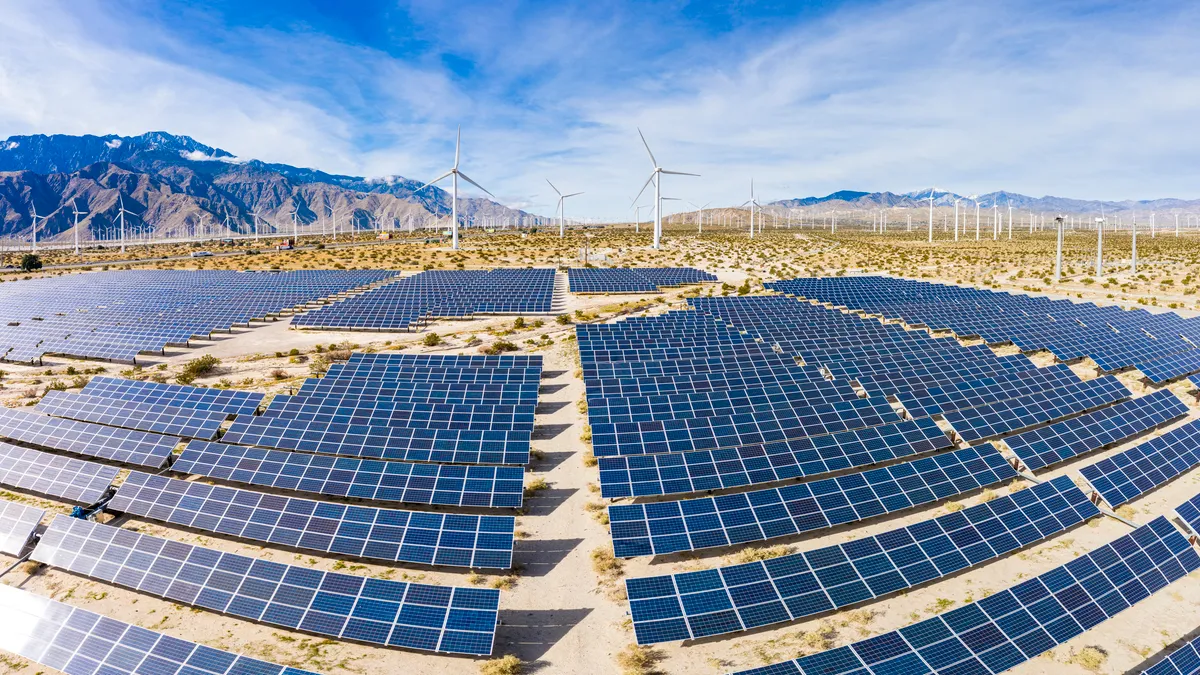Dive Brief:
-
U.S. solar installations in the second quarter of 2022 increased 12% over Q1, but remain 12% behind Q2 2021, according to a U.S. Solar Market Insight report released Thursday morning by the Solar Energy Industries Association and Wood Mackenzie.
-
Utility-scale projects have seen the greatest impact from 2022 supply chain and policy constraints, with Q2 installations down 25% year-over-year despite a 17% increase over Q1 2022, according to the report. Residential installations, meanwhile, saw one of their best second quarters on record, posting a 37% increase over the prior year’s second quarter.
-
The Inflation Reduction Act will help accelerate solar deployments over the next five years, but the full effect likely won’t begin until 2024, according to Wood Mackenzie analysts.
Dive Insight:
The solar industry is feeling more optimistic going into the second half of 2022, in spite of the difficulties experienced through the first half of the year.
New numbers from Wood Mackenzie and SEIA project that the U.S. will deploy 8.1 GW of utility-scale solar installations this year — the lowest annual total since 2018. Consumer demand for renewable energy remains strong, driving another quarter of growth for residential installations, according to the latest U.S. Solar Market Insight Report. But residential is the only solar segment to post growth so far this year. Commercial installations in the second quarter were down 7% year-over-year, community solar is down 15%, and utility-scale solar has taken a 25% hit.
But the Inflation Reduction Act passed in August has spurred a sense that change could be on the horizon, with Wood Mackenzie projecting that the law has the potential to increase total solar deployment by 40% from 2023 to 2027. Even so, anything other than a rejection of the claims raised in the Auxin case alleging tariff circumvention in Southeast Asia could upset the current balance, according to Shawn Rumery, senior director of research at SEIA and one of the authors of the new report.
“Now that the Inflation Reduction Act is law, we have an opportunity to significantly grow America’s solar manufacturing capacity,” he said in a statement. “Companies are already announcing new domestic manufacturing investments, and these facilities will only help us meet the soaring demand for solar and storage across the country.”
Under the law, the solar industry now has ten years of certainty with respect to federal tax credits — the longest-term guarantee it has ever enjoyed. Key provisions should also help to build up domestic manufacturing and supply chains to eliminate current constraints in the long term, according to the report.
Yet the full effect of the law won’t be felt for some time, according to the quarterly report, due to ongoing supply chain constraints. While President Biden’s executive order delaying the implementation of any new tariffs created by the Auxin cause did provide some relief, other policy and market forces continue to impede access to solar supply chains, the report noted.
The Uyghur Forced Labor Prevention Act, for example, continues to delay shipments of solar modules into the United States, the report said, and the results of the Auxin case aren’t expected until June 2024.
The prospect of retroactive tariffs means developers remain pessimistic about their ability to secure modules for large-scale projects in the short term, according to the report. Reluctance among developers led to a 10 GW reduction to the total 2022 pipeline of utility-scale projects either under construction or in development, while actions such as the executive order only increased anticipated solar deployment by 100 MW. Wood Mackenzie expects supply chain constraints to persist for the industry through at least 2024.













